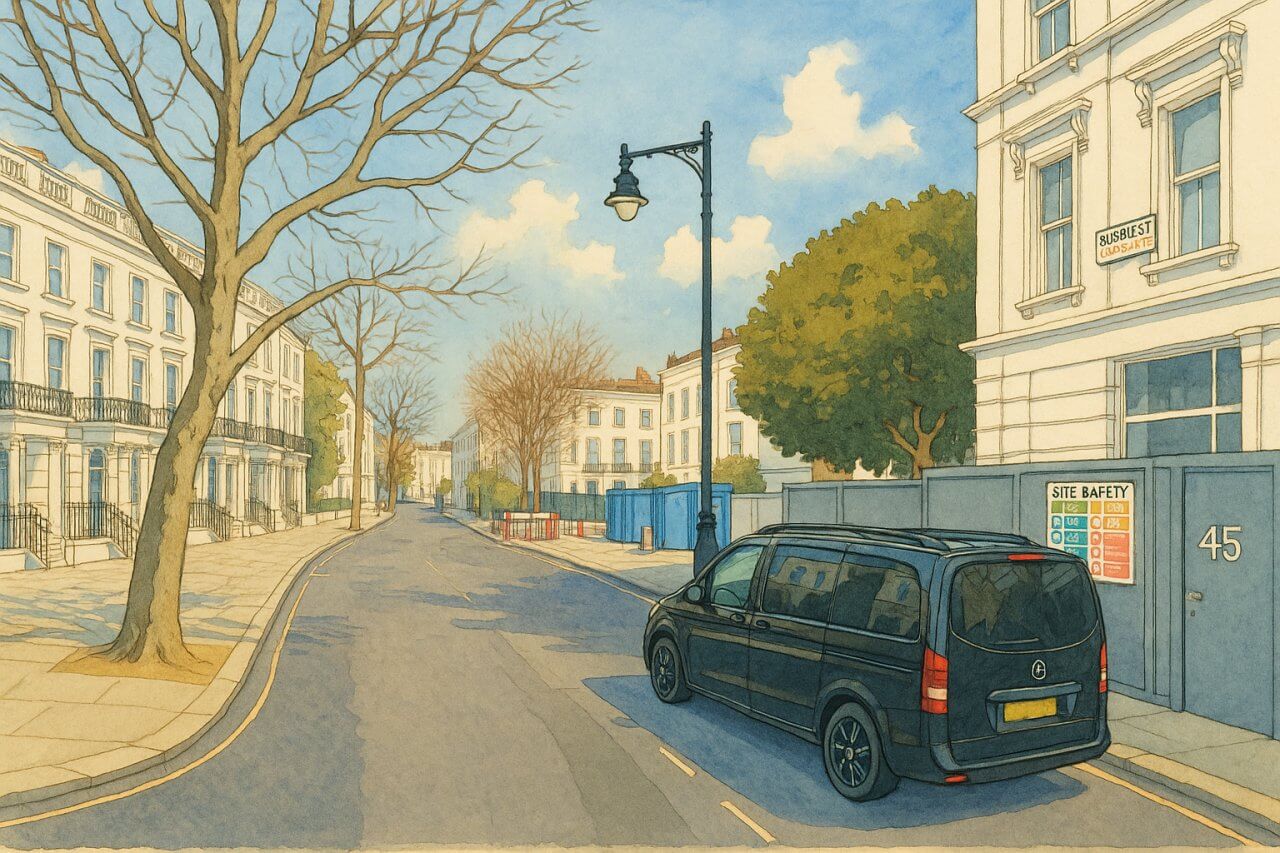
Sussex Street, London
Sussex Street is a residential road located in the heart of Pimlico, within the City of Westminster in Central London. The street forms part of the distinctive and historic Pimlico Grid, an area known for its elegant terraces and 19th-century town planning. Sussex Street cuts diagonally through the grid, making it a quiet yet interconnected thoroughfare for residents and local visitors.
Where is Sussex Street?
Sussex Street runs in a northeast-southwest direction, connecting Westmoreland Terrace at its southwestern end to Cambridge Street at its northeastern end. The stretch from Westmoreland Terrace to Westmoreland Place is not in alignment to the rest of the street, owing to realignment of the grid in the decades after the street was first laid. Along its short but characterful length, it crosses four other Pimlico Grid streets: Alderney Street, Winchester Street, Cumberland Street, and Sutherland Street.
Length and Traffic Direction
The street is approximately 215 metres (705 feet) in length. While it appears continuous on foot, it is not possible to drive the full length of Sussex Street from end to end due to one-way restrictions. The one-way flow goes from Westmoreland Place to Sutherland Street, and again from Cumberland Street to Sutherland Street. These segments contribute to the calm, low-traffic character that typifies the Pimlico Grid.
History and Development
Sussex Street, like much of Pimlico, was laid out in the mid-19th century as part of developer Thomas Cubitt’s grand vision for a fashionable residential district. The area was largely completed between the 1840s and 1860s, and Sussex Street reflects the same stucco-fronted architecture that characterises Cubitt’s designs—elegant, proportionate, and built for the upper-middle class of the time.
Origin and Pronunciation of the Name
Sussex Street is believed to be named after the historic English county of Sussex, following a common naming pattern throughout Pimlico that references English places and noble titles. The name likely dates from the original development in the 1840s or 1850s.
The word Sussex is pronounced SUH-seks, and in the International Phonetic Alphabet (IPA), it is transcribed as /ˈsʌsɪks/  .
.
Character and Appearance
The street is predominantly residential and typified by classic London townhouses in pale stucco, often with black iron railings and stone steps leading up to raised ground floors. Many buildings are now converted into flats, but some remain as single-family homes. The atmosphere is calm, refined, and distinctly Georgian-Victorian in appearance.
Nearby Sights and Points of Interest
While Sussex Street itself is primarily residential, it is within easy walking distance of several notable Pimlico and Westminster landmarks, including:
- St George’s Square – a tranquil garden square just west of the street.
- Pimlico Gardens and the River Thames – a short walk to the south.
- Tate Britain – just over ten minutes away on foot.
- Warwick Way and Wilton Road – offering shops, cafés, and local conveniences.
Property and Real Estate
As of early 2025, property prices on Sussex Street remain in line with Pimlico’s overall prestige. Flats typically range from £750,000 to £1.2 million, depending on condition and layout, with larger maisonettes fetching more. Full houses are rarely available but can exceed £2.5 million.
Typical flat sizes range between 600 to 1,200 sq ft (approximately 56 to 111 sq m). Homes here are highly desirable due to the street’s quiet charm, yet close proximity to central London attractions and transport links.
Transport Connections
Underground Stations
- Pimlico Station (Victoria line) – approximately 7 minutes on foot.
- Victoria Station (Victoria, District & Circle lines, National Rail and Gatwick Express) – about 12–15 minutes away.
Bus Services
The nearest bus stops are located along Lupus Street to the south and Belgrave Road to the west. Key routes include:
- Bus 24 – to Trafalgar Square and Hampstead Heath
- Bus 360 – to South Kensington and Elephant & Castle
- Bus C10 – to Victoria Station and Canada Water
Fun Fact
Sussex Street is part of what was once dubbed “
Quick Facts
- Location: Pimlico, City of Westminster, Central London
- Connects: Westmoreland Place to Cambridge Street
- Intersected by: Alderney Street, Winchester Street, Cumberland Street, Sutherland Street
- Length: Approx. 215 metres (705 feet)
- Traffic Direction: One-way in sections; not drivable end-to-end
- Built: Mid-19th century, c. 1840s–1860s
- Named after: County of Sussex; pronounced /ˈsʌsɪks/
- Character: Quiet, residential, classic stucco townhouses
- Nearby sights: Tate Britain, St George’s Square, Pimlico Gardens
- Typical flat size: 600–1,200 sq ft (56–111 sq m)
- Real estate prices: Flats from £750K to £1.2M; houses over £2.5M (as of 2025)
- Nearest tube: Pimlico (Victoria line)
- Nearby bus routes: 24, 360, C10
- Fun fact: Built on former marshland as part of Cubitt’s grand Pimlico development
Map of Sussex Street, London

Painting of Sussex Street, London (View image in full size)